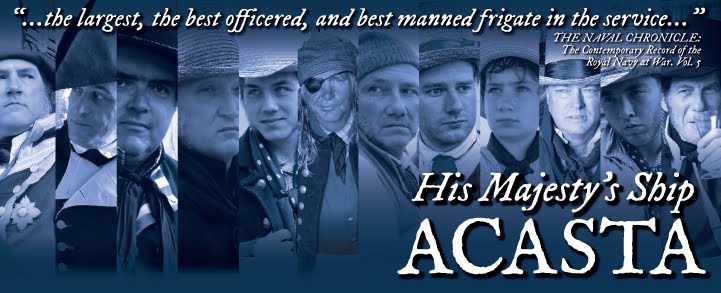Since pre-Roman times sailing vessels have always found themselves carrying these unintended stowaways. We’ve all heard of “rats deserting a sinking ship”, but rats also deserted many a seaworthy vessel and colonized the world in short order.
Among the British Tars rats were often referred to as “Millers” as they were sometimes covered in flour dust from their bread room raids. Rats served as one item in the below decks economy. Today we tend to think of rats as filthy, disease ridden vermin. Under uncrowded conditions rats are relatively clean animals and probably no more unhealthy for consumption than the domestic animals carried shipboard. Their taste has been compared to wild rabbit. Eating rats may also have had a hidden health benefit for tars. Scurvy, from a lack of vitamin C, was the great killer of seamen throughout the 18th and early 19th centuries. Humans cannot produce their own vitamin C from raw materials, but rats can. So consuming rats provided as small amount of vitamin C in the diet, and probably helped protect against scurvy.
Rats also played a role in below decks entertainment. “Rat Baiting” was a popular shore side entertainment. In this activity, a number of rats were released into a special constructed pit or arena and a small dog, cat or ferret was put in to see how many he could kill in a given period of time. A good ratting terroir could sell for big money. Rat catchers advertised “Country rats” which were regarded as more vigorous and healthy, and commanded higher prices. Shipboard there are accounts of rat baiting using ship’s cats or pet dogs. Coils of ship’s cable served as a pit.
Historically the ship’s rat of the 18th and early 19th centuries was not the same rat that you see scurry arcoss the alley today. What we collectively call “rats” in common jargon today are actually two different species, Black Rats and Brown (or Norway) Rats. The names are unfortunate, because both species are the same grey-brown color and to a casual observer look identical.
Brown Rats probably originated in northern China, spreading into Europe by medieval times along human trade routes. By the 18th century they were established in England, but black rats were far more common.
Brown rats are more terrestrial than black rats, they dig extensive burrows and on land often favor damp environments. They were preadapted for the human development subterranean sewer systems. The common name of “Norway Rat” comes from a mistake. The scientist giving them the scientific name “ Rattus norvegicus” in the 1760s thought they came into England with loads of timber from Norway. In actuality, this species apparently hadn’t yet invaded Norway at that time. Another early English name is “Hanover Rat”, a slur developed by those who wanted to blame all of England’s problems on the House of Hanover. Modern pet rats, in their plethora of selectively bred colors, are Norway rats.
The ship’s rats of the 18th and early 19th centuries were probably more often black rats. Black rats developed in southeastern Asia. They apparently invaded the British Isles along with the Roman legions. Black rats are arboreal, generally nesting in trees, and superb at climbing ship’s lines and rigging. They are less likely to burrow than Norway rats, and are smaller and less cold tolerant. The rat pictured with this article is a black rat from the Philippines. Notice it’s head is a little longer and it’s ears are proportionally larger than what we typically see on a pet rat?
Although the black rat colonized the world first, it was no match for it’s larger, more adaptable cousin. As tile and other materials began to replace thatched roofs (perfect black rat habitat) throughout England in the 18th century, Norway rats began to displace black rats. Today in England black rat populations are limited to several offshore islands and isolated pockets in seaside towns. The same thing happened in North America. In fact, if black rats were native to the US, they might well be considered an endangered species now.






























